The Ultimate Guide to Locating Capers in Your Grocery Store. The Ultimate Guide to Using Capers in Your Kitchen. Elevate Your Dishes: A Comprehensive Guide to Capers
A simple question, where are capers in the grocery store, may leave some people wandering the aisles. The answer is quite simple: capers are typically found in the famous condiment aisle of grocery stores, nestled comfortably between pickles and olives. But don’t stop here! In this comprehensive guide, we’ll delve into the world of capers, their unique characteristics, various brands, locations in different stores, substitutes when capers are nowhere to be found, and some valuable tips that will turn you into a caper-locating pro in no time.
Contents
The Difference Between Nonpareil and Capote Capers
When shopping for capers, you might come across the terms “Nonpareil” and “Capote” capers. These terms refer to the size of capers. Nonpareil capers are the smallest, measuring between 1 to 7mm, while Capote capers are more prominent, measuring 9 to 11mm. Here’s a comparative glance at these two types.
| Nonpareil Capers | Capote Capers |
|---|---|
| They are the little capers, measuring 1 to 7mm. | These are larger, measuring 9 to 11mm. |
Known for their superior flavor and texture. They have a milder taste than nonpareil capers.
Famous Brands of Capers
Diving into the world of capers can introduce you to various brands, each boasting unique features and characteristics. Let’s delve into some of the market’s most renowned brands of capers.
Detailed Overview of Cento Capers
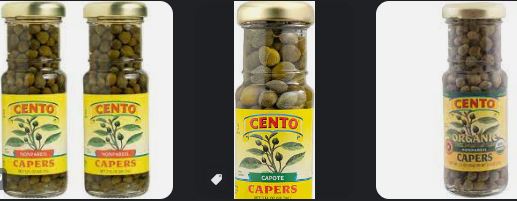
Cento is a respected name when it comes to capers. These capers are packed in a brine that helps preserve their unique flavor. They offer Nonpareil capers which are perfect for adding a savory punch to your dishes.
| Cento Capers | Details |
|---|---|
| Size | Nonpareil, small size |
| Origin | Imported |
| Brine | Salt and Vinegar |
| Usage | Ideal for Pasta Puttanesca or as a garnish |
Detailed Overview of Reese Capers
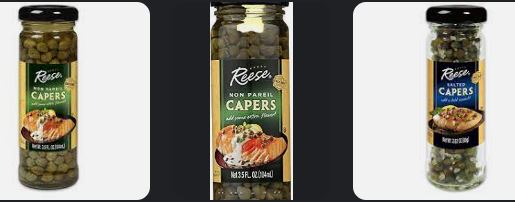
Reese has been offering high-quality capers for decades. Their capers come in a vinegar brine, ensuring a tangy flavor that can elevate any dish.
| Reese Capers | Details |
|---|---|
| Size | Nonpareil, small size |
| Origin | Product of Morocco |
| Brine | Salt and Vinegar |
| Usage | Excellent for fish dishes, sauces, and salads |
Detailed Overview of Goya Capers
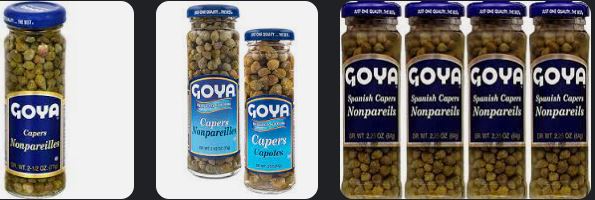
Goya is known for a variety of quality food products, including capers. Their capers are packed in a salty brine that balances the naturally tangy flavor of capers.
| Goya Capers | Details |
|---|---|
| Size | Varying sizes available |
| Origin | Product of Spain |
| Brine | Saltwater |
| Usage | A versatile addition to a variety of dishes |
Detailed Overview of Crosse & Blackwell Capers
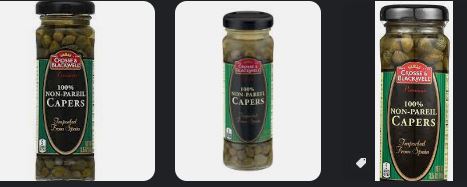
Crosse & Blackwell capers are an excellent choice for quality and affordability. They are packed in a tangy vinegar brine which complements the natural flavor of the capers.
| Crosse & Blackwell Capers | Details |
|---|---|
| Size | Nonpareil, small size |
| Origin | Product of Spain |
| Brine | Salt and Vinegar |
| Usage | Perfect for sauces and garnishes |
Detailed Overview of Mezzetta Capers
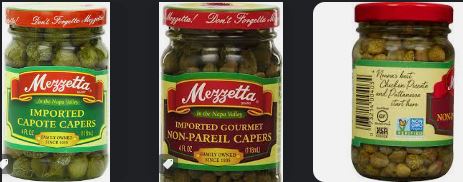
Mezzetta is a family-owned company that delivers capers of excellent quality. Their Nonpareil capers are packed in a vinegar brine to keep them flavorful.
| Mezzetta Capers | Details |
|---|---|
| Size | Nonpareil, small size |
| Origin | Imported |
| Brine | Salt and Vinegar |
| Usage | Great for Italian dishes like Chicken Piccata |
Detailed Overview of Paesana Capers
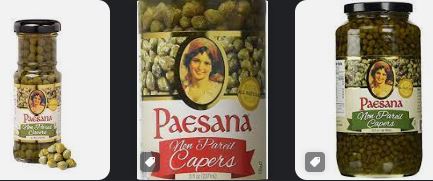
Finally, we have Paesana, known for its range of authentic Italian products, including capers. They offer capers in a brine that helps preserve their unique, bold flavor.
| Paesana Capers | Details |
|---|---|
| Size | Varying sizes available |
| Origin | Product of Italy |
| Brine | Saltwater |
| Usage | Ideal for adding a tangy touch to your Italian dishes |
With an understanding of these famous brands, you’ll be more prepared to make a confident selection during your next caper-shopping venture. Up next, we’ll discuss which grocery stores carry capers and where to find them within those stores.
Capers in the Grocery Store
 Knowing exactly where to find capers in a grocery store can save you time and make your shopping experience more efficient. This section is devoted to guiding you through the maze of grocery store aisles.
Knowing exactly where to find capers in a grocery store can save you time and make your shopping experience more efficient. This section is devoted to guiding you through the maze of grocery store aisles.
Typical Location of Capers in General Grocery Stores
In most general grocery stores, capers are usually found in the condiment aisle, near the pickles, olives, and other salty goods. The packaging may vary, ranging from small jars to larger bottles.
| Store Section | Associated Items |
|---|---|
| Condiment Aisle | Pickles, Olives |
An In-Depth Guide to Finding Capers in Large Chains (Walmart, Target, Whole Foods)
Once you know where to look, capers can be located quite easily in large chain stores.
- At Walmart, head to the condiment and sauces aisle. Here, you will likely find various brands of capers nestled amongst jars of pickles and olives.
- Target typically places its capers with salad dressings and other vinegar-based condiments.
- At Whole Foods, you can expect to find capers in the aisle with pickles and olives as part of their range of gourmet condiments.

| Store | Aisle | Associated Items |
|---|---|---|
| Walmart | Condiments and Sauces | Pickles, Olives |
| Target | Salad Dressings | Vinegar-based condiments |
| Whole Foods | Gourmet Condiments | Pickles, Olives |
Navigating Local Health Food Stores and Italian Markets for Capers
In local health food stores, capers are often included in the section with pickled and fermented goods due to their brining process. These stores may also stock capers in the gourmet food section.
Italian markets usually have a robust selection of capers, given the ingredient’s prominence in Italian cuisine. In these specialty stores, capers might be found near other Italian staples like pasta, olive oil, and canned tomatoes.
| Store Type | Section | Associated Items |
|---|---|---|
| Health Food Stores | Pickled and Fermented Goods, Gourmet Foods | Pickles, Olives, Gourmet items |
| Italian Markets | Italian Staples | Pasta, Olive Oil, Canned Tomatoes |
Navigating the grocery store to find capers can be a manageable task. Equipped with this knowledge, you’ll be able to find them easily and quickly. As we progress to the next section, we’ll guide you on the best ways to choose capers when you’re at the store.
How to Identify Capers in the Grocery Store
It’s about more than knowing where to find capers in the grocery store, but also how to identify them among other similar products. This section will guide you through recognizing capers by packaging and labels, distinguishing different types and sizes, and comparing them to other pickled items.
Recognizing Capers by Packaging and Jar Labels
Capers are typically sold in small glass jars with metal lids, similar to other pickled products. They are submerged in a pickling solution, a simple brine or vinegar base, and sometimes even salt-packed.
The labels on caper jars usually feature the word “Capers” prominently, often alongside the size or type of caper (like “Nonpareil” or “Capote”). Look for additional details on the label, such as the brand, country of origin (commonly Italy, Spain, or Morocco), and whether they are organic or contain additional flavors like garlic or herbs.
| Label | Feature | Description |
|---|---|---|
| Packaging | Small glass jar, metal lid | |
| Pickling solution | Brine, vinegar, or salt-packed | |
| Size or Type | Nonpareil, Capote, etc. | |
| Brand | Cento, Reese, Goya, etc. | |
| Origin | Italy, Spain, Morocco, etc. | |
| Additional Details | Organic, added flavors |
Identifying Different Sizes and Types of Capers
There are several sizes and types of capers available. The most common types you’ll find in grocery stores are Nonpareil and Capote. Nonpareil capers are the most minor and desirable due to their tender texture and concentrated flavor. Capote capers are slightly larger and offer a robust, tangy flavor.
| Caper Type | Size | Description |
|---|---|---|
| Nonpareil | Small | Tender texture, concentrated flavor |
| Capote | Larger | Robust, tangy flavor |
Comparing Capers to Other Pickled Items
Capers may look similar to some other pickled items, but there are key differences to look for. Capers are much smaller and have a distinct round shape than pickled cucumbers or olives. They’re typically a dark green or olive color. When in doubt, refer back to the label – capers will always be identified.
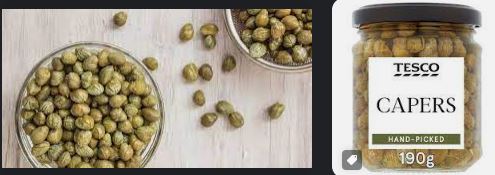
| Item | Size | Color | Shape |
|---|---|---|---|
| Capers | Small | Dark green/Olive | Round |
| Pickles | Large | Bright/Dark green | Cylindrical |
| Olives | Medium | Green/Black | Round/Oval |
Recognizing capers in the grocery store is simple once you know what to look for. With this knowledge, you’ll be able to identify and select capers during your next shopping trip confidently. Let’s understand how to use these flavorful additions in your kitchen.
Caper Substitutes
You may find yourself in an awful confusing situation where you don’t have access to capers, or perhaps you don’t fancy their taste. Fortunately, several viable substitutes can mimic capers’ unique flavor and add a similar zest to your dishes.
When and Why to Use Substitutes
Capers’ salty, tangy, and slightly floral flavor is unique but not irreplaceable. It would be best to use a substitute for several reasons: availability, dietary restrictions, or personal preference.
When choosing a substitute, it’s crucial to consider the context of the recipe. Certain substitutes work better than others, depending on the specific flavors and textures you need.
Green Olives as a Substitute for Capers
Green olives can be an excellent substitute for capers in many recipes. Their salty, briny flavor is a good match, though their larger size can impact the dish’s texture. Before using olives as a substitute, chop them finely to mimic the size and consistency of capers.
| Substitute | Flavor | Texture | Preparation |
|---|---|---|---|
| Green Olives | Salty, briny | Firmer, larger | Chop finely |
Pickles as a Substitute for Capers
Pickles offer a similar salty, vinegary taste but with a different texture. Dill pickles are a popular choice for substitution. Use pickled gherkins if you want a size closer to capers.
| Substitute | Flavor | Texture | Preparation |
|---|---|---|---|
| Pickles | Salty, vinegary | Crunchy | Chop finely |
Lemon and Black Pepper as a Substitute for Capers
If you’re trying to mimic the tangy flavor of capers but don’t have any of the above substitutes, a mixture of lemon juice and black pepper can work. The lemon gives the tang, while the pepper adds a bit of heat, making a good approximation of the flavor profile of capers.
| Substitute | Flavor | Texture | Preparation |
|---|---|---|---|
| Lemon & Black Pepper | Tangy, spicy | N/A | Mix to taste |
While these substitutes might not perfectly replicate the flavor and texture of capers, they can still provide a similar taste profile and keep your recipe on track. Next, we will explore various recipes where capers can add that perfect touch of flavor.
Purchasing and Storing Capers
Once you’ve developed a palate for capers, you may find them becoming an immanent staple in your pantry. But how do you select quality capers and ensure they stay nice and fresh for as long as possible?
Selecting Quality Capers
When it comes to purchasing capers, keep in mind that size matters. More miniature capers, often labeled ‘nonpareil,’ are considered superior due to their more delicate flavor and texture. Look for tightly closed capers packaged in brine, which helps preserve their flavor and freshness.
| Quality Check | Considerations |
|---|---|
| Size | Smaller (‘nonpareil’) capers are often of higher quality |
| Packaging | Capers should be tightly closed and packaged in brine |
Properly Storing Capers for Freshness
Capers have a long shelf life due to their brine or salt packing. After opening, storing them in the refrigerator in their original brine in a jar with a tight-fitting lid is best. It can extend their freshness for up to nine months. Always use a clean utensil when removing capers to prevent contamination.
| Storage Step | Considerations |
|---|---|
| Refrigeration | Store capers in their original brine in the refrigerator |
| Container | Use a jar with a tight-fitting lid |
| Utensils | Use clean utensils to prevent contamination |
Expiry and Signs of Spoilage
While capers can last a long time, they can spoil. Signs of spoilage include an off smell, mold, or an unusually soft texture. If you observe any of these bad signs, discard the capers immediately.
| Signs of Spoilage | Considerations |
|---|---|
| Smell | An off smell is a sign of spoilage |
| Appearance | Mold or changes in color indicate spoilage |
| Texture | Unusually soft capers may be spoiled |
Understanding how to select, store, and recognize when capers have spoiled ensures you’ll always have fresh and flavorful capers ready to enhance your culinary creations.
Practical Tips for Capers
How to Add Capers to Your Dishes Effectively
Capers are versatile, but their potent flavor can be overpowering if not used carefully. A good golden rule of thumb is always to start with a small amount and carefully taste as you go. Also, remember to rinse capers before use to remove excess salt or brine. They can be chopped or used whole, depending on the recipe.
| Adding Capers Tips | |
|---|---|
| Quantity | Start with a small amount and adjust to taste |
| Prep | Rinse before use to remove excess salt or brine |
| Usage | Can be used whole or chopped depending on the recipe |
How to Minimize the Risk of Caper Jar Breakage During Transportation
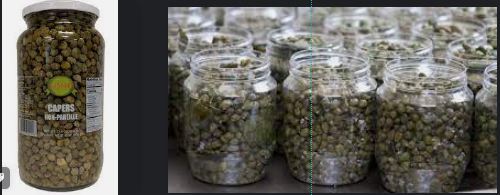 Caper jars are typically made of glass and can break during transportation. To avoid this, ensure the pot is upright and cushioned with soft materials like bubble wrap. Avoid placing heavy items next to the bank.
Caper jars are typically made of glass and can break during transportation. To avoid this, ensure the pot is upright and cushioned with soft materials like bubble wrap. Avoid placing heavy items next to the bank.
| Transportation Tips | |
|---|---|
| Position | Keep the jar upright |
| Cushioning | Use bubble wrap or other soft materials |
| Arrangement | Avoid placing heavy items next to the jar |
Experimenting with Capers in New Dishes
Feel free to get creative with capers! They can bring an unexpected twist to salads, pizzas, and pasta dishes. Remember, the key is to balance their robust flavor with other ingredients.
Conclusion
Capers are a standout ingredient from their unique taste to their impressive health benefits and versatile culinary uses. We hope this comprehensive guide inspires you to experiment with capers in your kitchen and elevate your dishes to new flavor heights.
References
- The Fundamental Techniques of Classic Italian Cuisine by Cesare Casella
- Authentic Italian Cuisine by Giovanni Mancini

Ivelina Dimitrova is a seasoned journalist with extensive experience spanning various facets of the media industry. Over the years, she has worked in numerous newspapers and magazines, contributing thoughtful articles that reflect her deep understanding of various topics. Ivelina’s journalism career also extends to radio and regional television stations, where her articulate and compelling narratives have reached a broader audience. Her commitment to truth, accuracy, and storytelling has earned her a respectable place in the industry, and she continues to dedicate her craft to enlightening and engaging her readers and listeners.

Another tip, if you have leftover brine, you can use it instead of vinegar in salad dressings!
This is a great guide! I also found that capers can work well in fish dishes for an added pop of flavor.
I was hesitant to try capers at first because of their unique taste, but they’ve grown on me. Thanks for all the useful info!